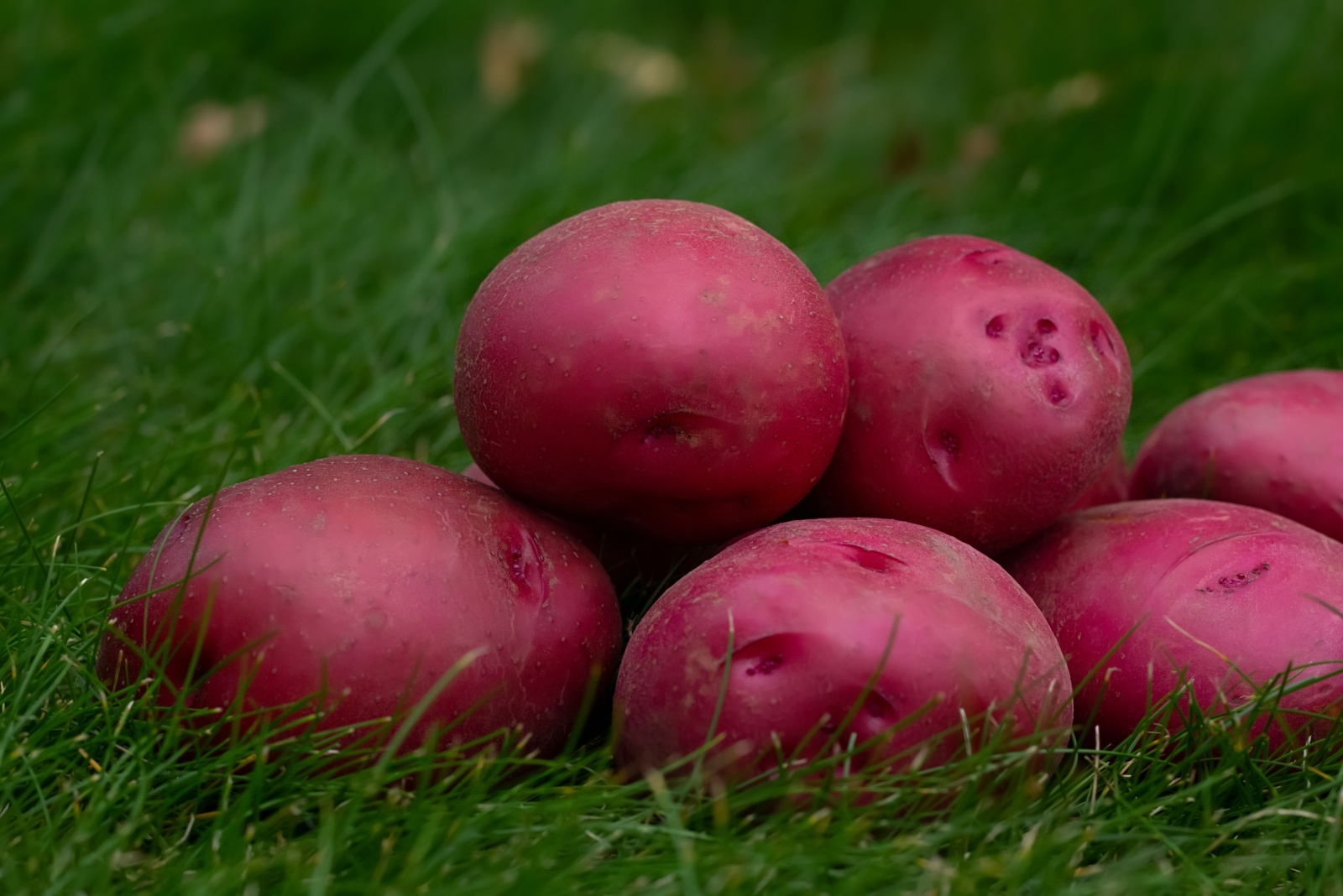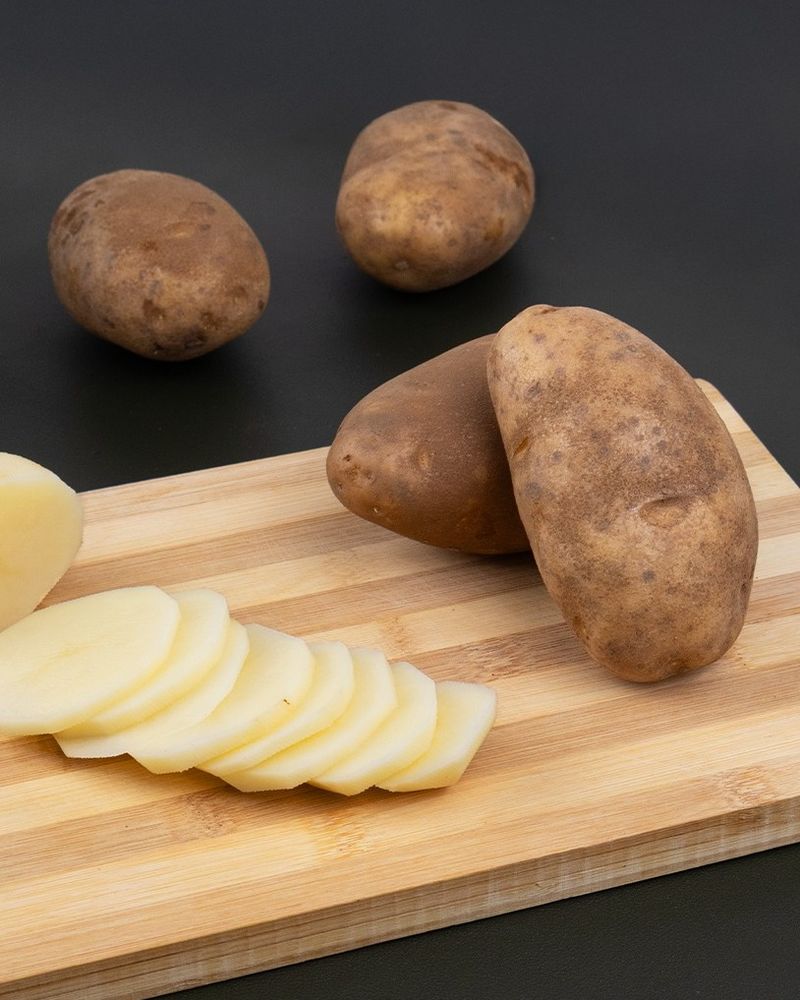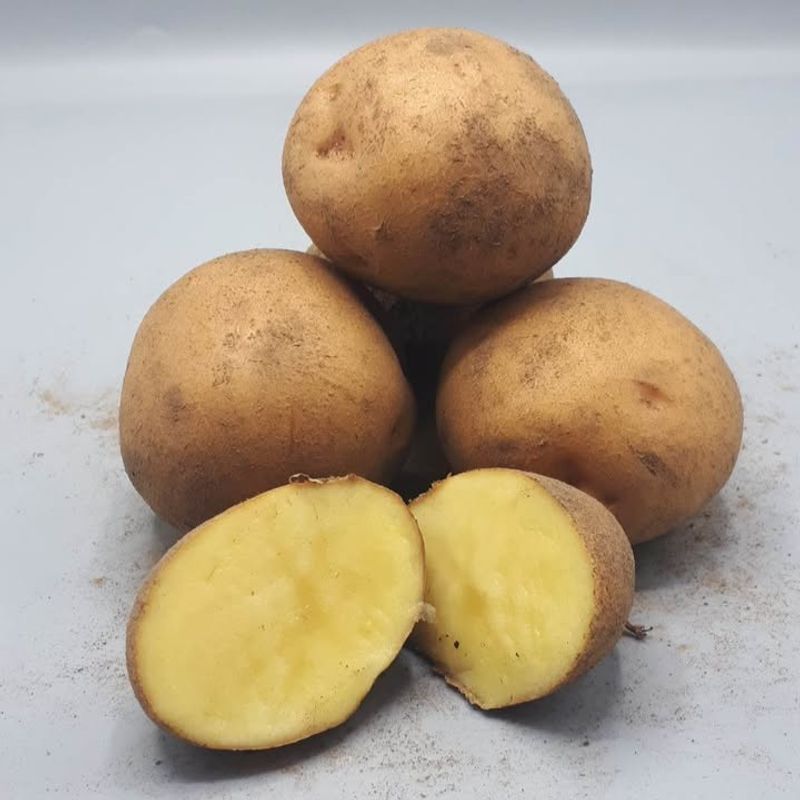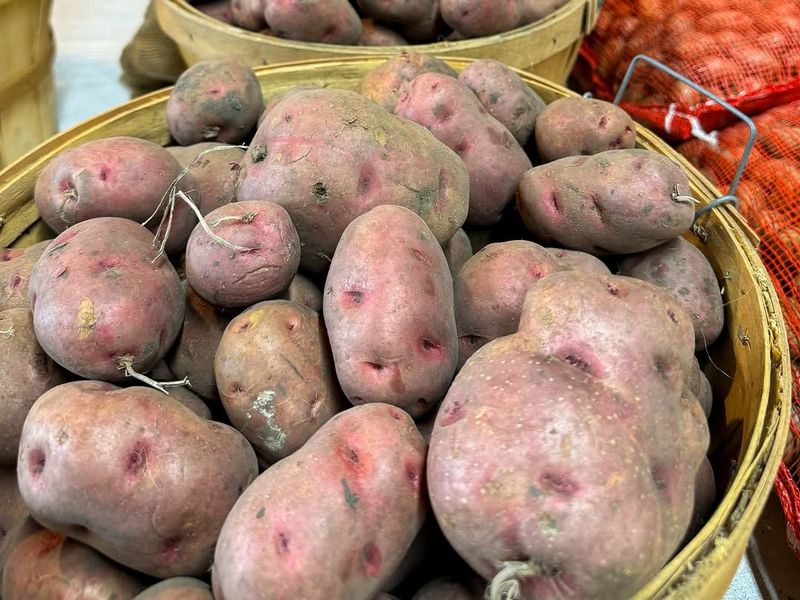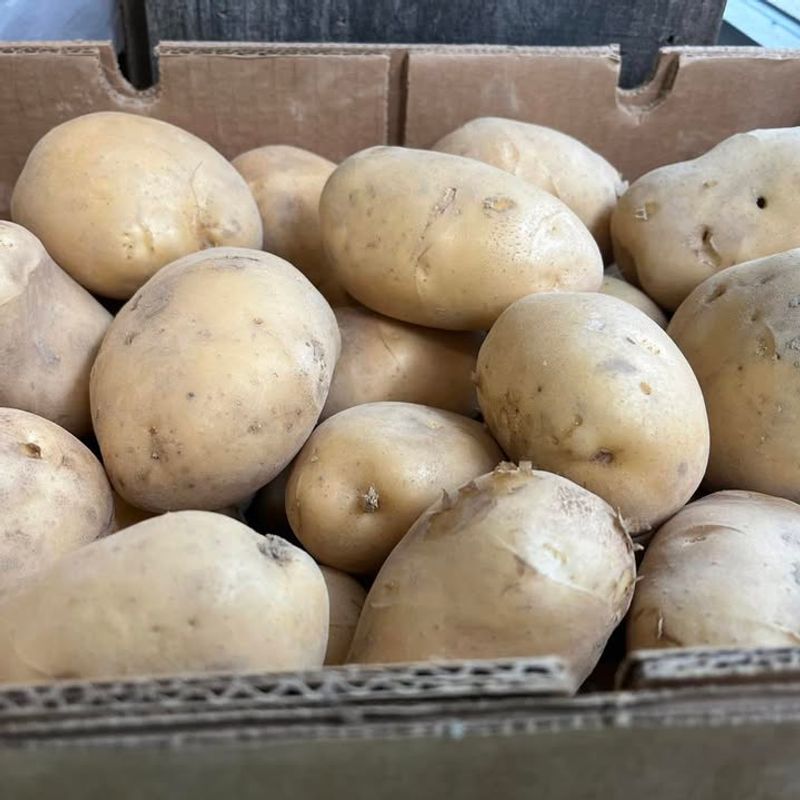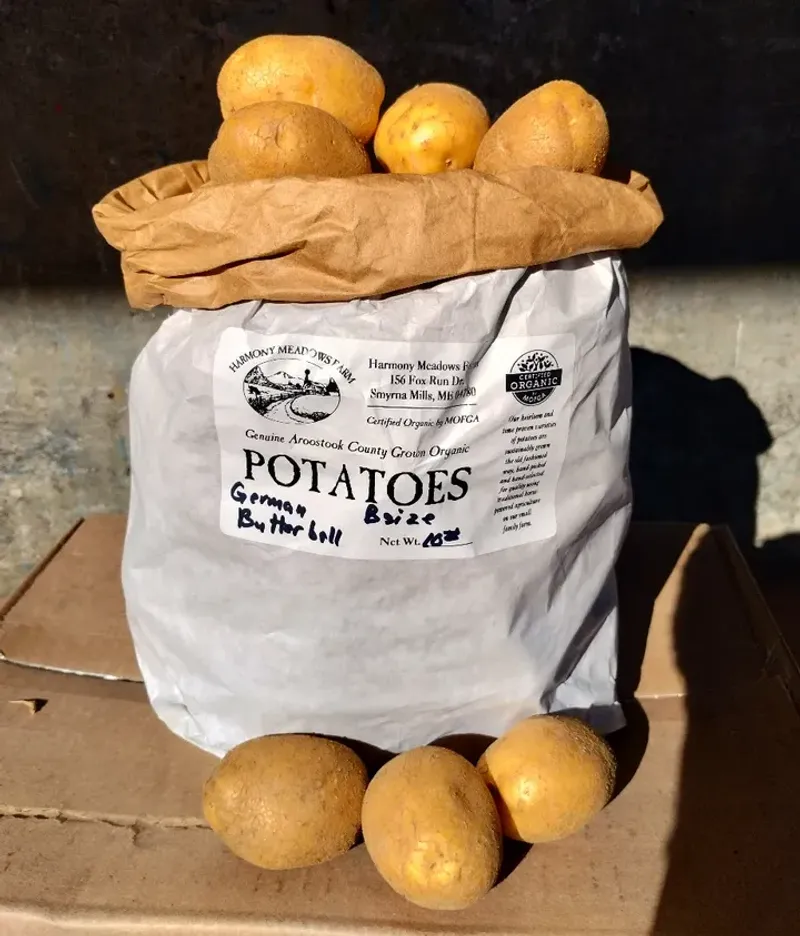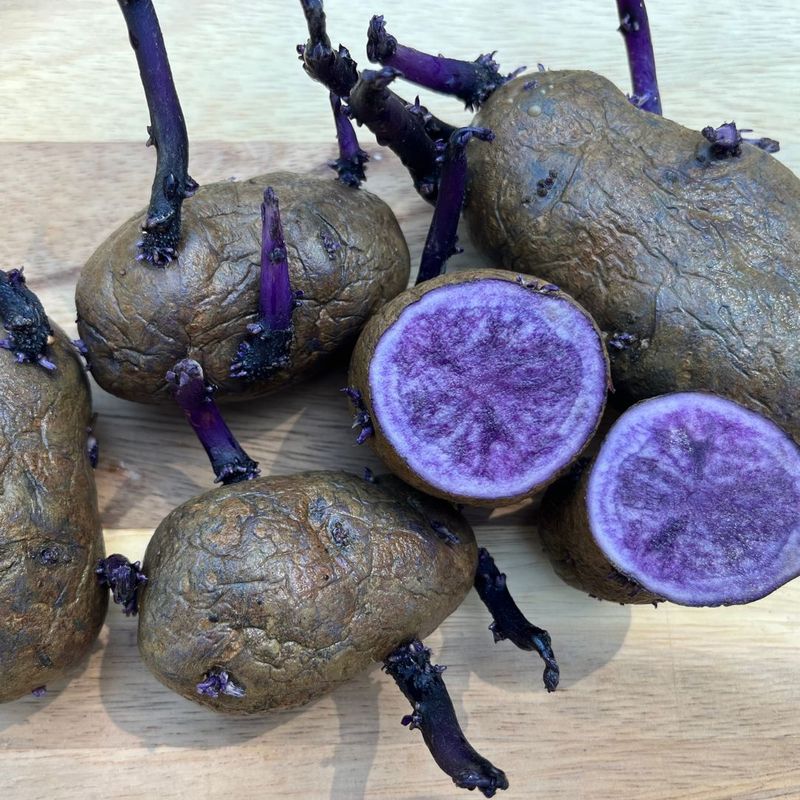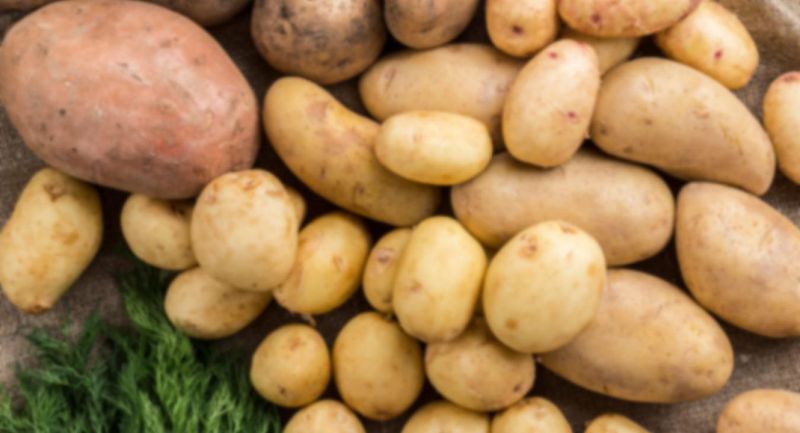Idaho is famous for its potatoes, and fall planting opens up exciting opportunities for gardeners. Cooler temperatures and moist soil create ideal conditions for certain varieties to develop strong roots before winter arrives.
Choosing the right potato type can mean the difference between a bountiful harvest and a disappointing crop. Let’s explore some excellent options that perform beautifully when planted during Idaho’s autumn months.
1. Russet Burbank
Famous throughout Idaho and beyond, Russet Burbank potatoes have earned their reputation as the state’s signature crop. Their thick, rough skin protects them beautifully during cold fall nights, making them surprisingly hardy.
Fall planting allows these spuds to establish deep root systems before the ground freezes. They produce large, oblong tubers perfect for baking, frying, or mashing.
Farmers love how well they store through winter months. Home gardeners appreciate their reliable performance and classic potato flavor that never disappoints at the dinner table.
2. Yukon Gold
With buttery yellow flesh and thin golden skin, Yukon Gold potatoes bring color to any autumn garden. Cold-tolerant by nature, they actually develop sweeter flavor when temperatures drop during fall planting.
These medium-sized beauties mature relatively quickly, even in cooler weather. Their creamy texture makes them incredibly versatile in the kitchen, from roasting to boiling.
Gardeners find them forgiving and easy to grow. The waxy texture holds up wonderfully in soups and stews, perfect for warming up during Idaho’s chilly evenings ahead.
3. Red Pontiac
Bright red skin makes Red Pontiac potatoes instantly recognizable in any harvest basket. Originally developed for summer crops, they’ve proven surprisingly adaptable to fall planting conditions across Idaho’s diverse regions.
Their shallow eyes make peeling optional, saving time in the kitchen. White flesh inside stays firm when cooked, making them ideal for potato salads and roasting.
Disease resistance is another major advantage. They handle Idaho’s variable fall weather patterns with minimal fuss, producing consistent yields even for beginning gardeners trying autumn planting.
4. Kennebec
Kennebec potatoes have quietly fed families for generations, though they rarely grab headlines. Late blight resistance makes them particularly valuable for fall planting when moisture levels rise and fungal diseases threaten other varieties.
Their smooth, light tan skin conceals bright white flesh that’s perfect for chips and fries. Medium to large tubers develop reliably, even when planted later in the season.
Commercial growers and backyard gardeners both appreciate their dependability. Storage quality remains excellent through winter, ensuring fresh potatoes long after the growing season ends.
5. German Butterball
Did you know? German Butterball potatoes date back to the 1800s, bringing old-world charm to modern Idaho gardens. Their golden, slightly russeted skin hints at the rich, buttery flavor waiting inside.
Fall planting actually enhances their natural sweetness as cooler soil temperatures slow growth and concentrate sugars. Round to oval shapes make them easy to work with in any recipe.
They’re surprisingly cold-hardy for a yellow-fleshed variety. Many gardeners report better flavor from fall-planted crops compared to spring plantings, making autumn the preferred season.
6. All Blue
Purple inside and out, All Blue potatoes look like they belong in a science fiction movie rather than a garden. Their striking color comes from anthocyanins, powerful antioxidants that remain stable even after cooking.
Fall planting in Idaho gives them time to develop intense coloration. Cool nights actually deepen the purple hues, creating even more visually stunning tubers.
Kids especially love the novelty of blue mashed potatoes or purple fries. Beyond the fun factor, they offer excellent nutrition and adapt well to Idaho’s autumn climate patterns.
7. Ranger Russet
Bred specifically for Idaho conditions, Ranger Russet potatoes feel right at home in the state’s fall gardens. Their heavy, netted skin provides excellent protection against early frost damage that can threaten other varieties.
Long and cylindrical, they’re perfect for making restaurant-quality fries at home. High starch content creates that fluffy interior texture everyone loves.
Commercial operations favor them for reliability and storage capabilities. Home gardeners benefit from the same qualities, enjoying consistent results from fall plantings year after year without complicated care requirements.

